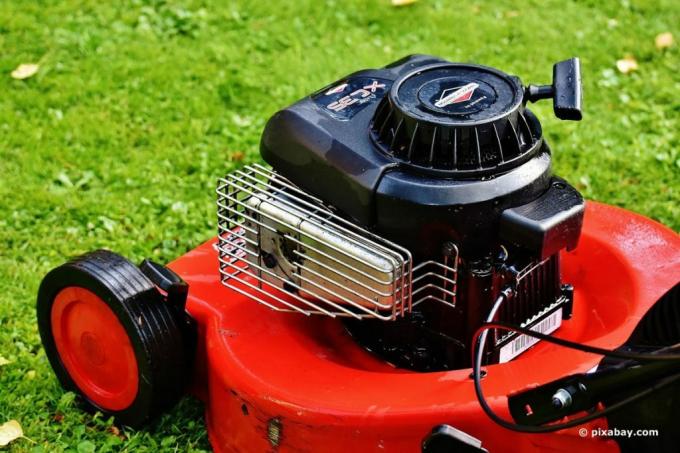
table of contents
- Mixture or separate engine oil?
- 2-stroke oil
- The marking of engine oil
- Mineral oil or bio oil?
- frequently asked Questions
The lawn mower is one of the best-known and most popular working machines in the home garden. As soon as an internal combustion engine is used, there is no avoiding engine oil for operation. But which one is the right one?
In a nutshell
- Lawn mowers with a 2-stroke engine or a 4-stroke engine can have different lubrication systems
- Which engine oil a 4-stroke engine needs is stated on the engine and in the operating instructions
- Biological oils tend to "resinify" if they are not used for a long time and are therefore only conditionally suitable for lawnmowers
Mixture or separate engine oil?
With regard to the correct oil, there is an elementary difference, depending on which engine type was installed. There are two different systems that use completely different modes of operation for lubrication and therefore also for engine oil:

- 2-stroke engines: Lubrication through the fuel used via a fuel-oil mixture
- 4-stroke engines: separate lubrication by means of engine oil that is separated from the fuel
Either a special 2-stroke oil or a conventional lubricating oil suitable for the type of engine in question is used.
2-stroke oil
If a special 2-stroke oil is required, this is marked for suitability for mixing with the fuel and can be used for all two-stroke engines. The only decisive factor then is the correct mixture ratio for the lawnmower in question. Typical mixtures are:
- 1 part 2-stroke oil to 25 parts gasoline
- 1 part 2-stroke oil to 40 parts gasoline
- 1 part 2-stroke oil to 50 parts gasoline
Which ratio is to be mixed is usually specified on the nameplate and in the manual.
Note: Again and again you read that other oils can also be mixed with the fuel. For the benefit of your engine, refrain from doing so, so as not to provoke damage due to insufficient lubrication.
The marking of engine oil
On the other hand, it is a little more difficult with the 4-stroke engine. As with cars and other internal combustion engines, the manufacturer clearly specifies which type of oil or which group of motor oils may be used. Typical names are for example SAE 5W40, or SAE 10W40 or comparable. The individual numbers stand for the following properties of the oil:

- SAE = "Society of Automotive Engineers", name of the classification system for the oil
- Number before the W: describes the flow properties in a cold state; the lower the number, the “thinner” the product and the better the cold start properties of the motor
- Number after the W: describes the flow properties in a warm (W) state, the higher the number, the "thicker" and therefore more resilient the product
Attention: Some manufacturers specify a range of possible oils for the lawnmower. If you deviate from the range, the lubricating effect may be lacking or the engine may have starting problems.
Mineral oil or bio oil?
In order to protect resources and the environment, the market offers not only classic mineral oils but also biological products based on Rapeseed or other plants. The big problem with organic oils is the tendency to harden if left idle for a long time. In the worst case, the oil can harden and the engine can no longer be used.
frequently asked Questions
In the early stages it can help to warm up the engine, e.g. B. with a heat gun. Most of the time, however, this is an issue for the specialist workshop.
Smoke suggests burning oils. Every 2-stroke smokes to a small extent. However, if there is a lot of smoke, there is in all likelihood too much oil in the fuel.
If in doubt, use the common mixture with the highest oil content, i.e. 1:25. If in doubt, you have to put up with a little more smoke and, in the long run, an oily carburetor. It is therefore essential to ask your specialist dealer or the manufacturer directly for the correct fuel.
